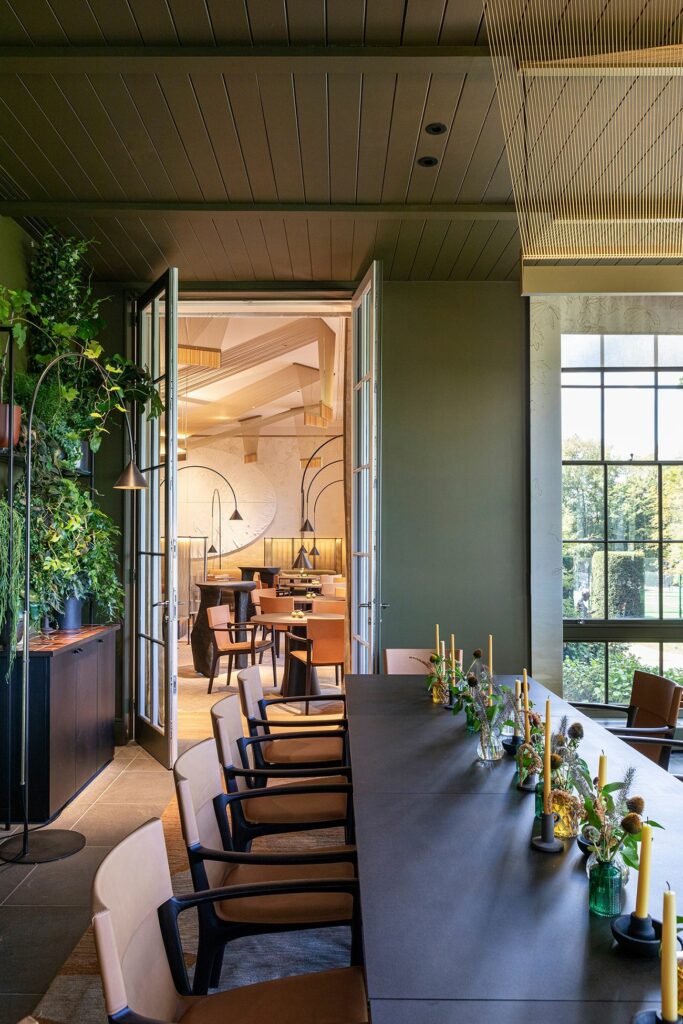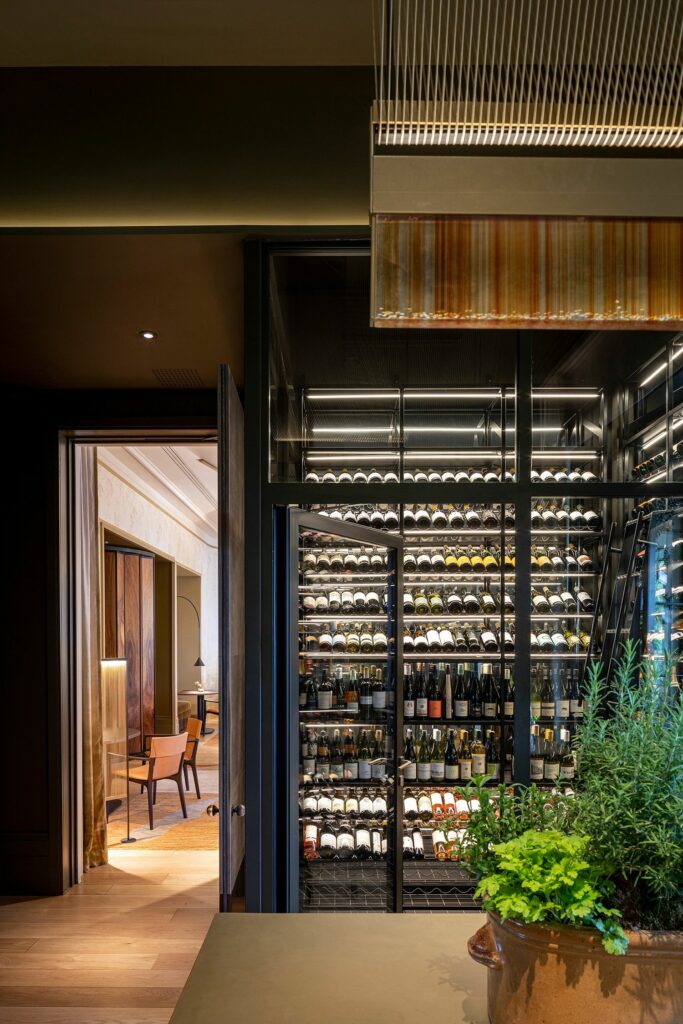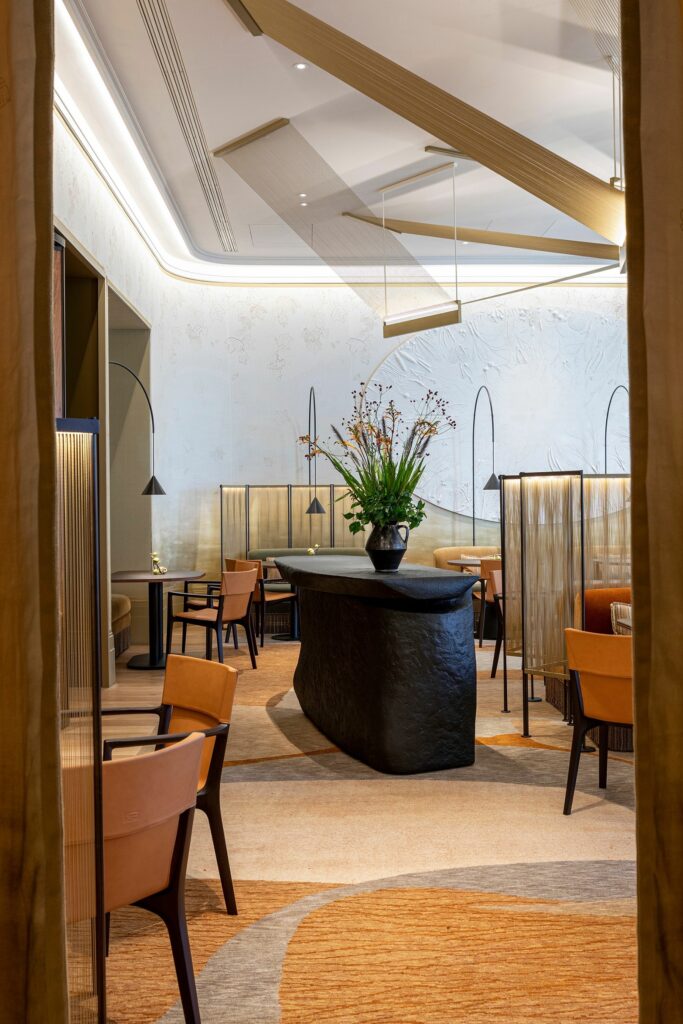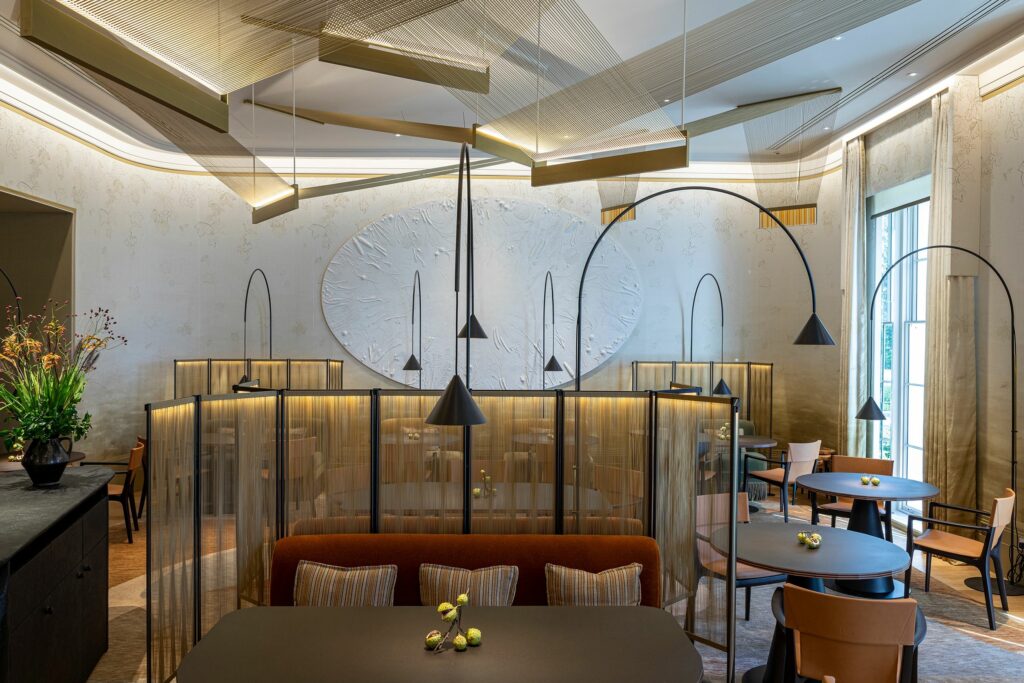Header: Courtesy of Martin Hulbert Design; Photographer: Mark Bolton
Dining can be more than just putting on a nice outfit, going out, ordering delicious food, and then going on with life in a comfortable mood. Many people have been viewing dining as more of an experience, choosing restaurants according to what they offer along with the food. Some of these experiences can be, for example, enjoying a live concert, being mesmerised by watching the chef cook, or, as is the case with Woven by Adam Smith, being transported into a luminous part of a broad English tradition.

Photographer: Mark Bolton
Woven and light that weaves through
Woven by Adam Smith is a Michelin-starred restaurant located in Ascot, England, part of a luxurious spa hotel, Coworth Park. This restaurant is unique because of the way the design draws from traditional English weaving, seen all over the ceiling, walls, and partitions. The lighting design was thoughtfully selected by dpa Lighting Consultants to be versatile, giving focus to both the décor and the food.
The restaurant has earthy tones and warm lighting, making it the perfect spot for those who wish to have a dining-out experience without sacrificing intimacy and comfort. Personalised to the brim, each detail isn’t there by chance.


When interior design and lighting design merge
Martin Hulbert Design, responsible for the interior design, chose a sculptural conker shell and stem as a focal element for each table. To complete the design choice, the design studio Umut Yamac added an adjustable table light that, when lowered, illuminates the sculpture. This lamp can be raised when guests are seated and about to enjoy their food as it lights up the whole table, bringing out the yummy textures and colours of the plates while creating a warm and intimate ambience.
Above the guests, “Loom” sculptures that resemble weaving structures float calmly, illuminated by integrated uplighting concealed within them. The partition screens that further provide a sense of privacy and cosiness echo this same design, again complemented by concealed linear lighting.
The lighting design studio, dpa Lighting Consultants, was in charge of choosing how to better integrate lighting into the décor and overall interior design, having worked closely with the other two design studios, including Studio Umut Yamac, to better integrate their sculptural lighting items.
Lighting was also added to the shelves displaying beverages, to the ceilings and wall coves, and as a way to enhance interior accent features. Cooperation was key in this project, as the design had to be in total sync to pass on the vibe of the spa hotel Coworth Park.


Sustainability for efficient relaxation
But such an intricate lighting design needs a quality control system to make sure it is energy efficient. The restaurant is equipped with a new control system that allows the staff to control the intensity of the lights, which helps to create the perfect ambience for any time of the day.
Sustainability-wise, the lighting design equipment is replaceable and can be recycled, which helps maintain a circular economy and reduce waste. Each lighting element is LED and requires low power to be used, which, combined with the control system, ensures that the restaurant only uses the power it needs – no extras.
Relaxation and enjoyment were at the base of this design, an objective that could only be achieved if all parties communicated with each other – which, as we can see, clearly happened.

Photographer: Mark Bolton








